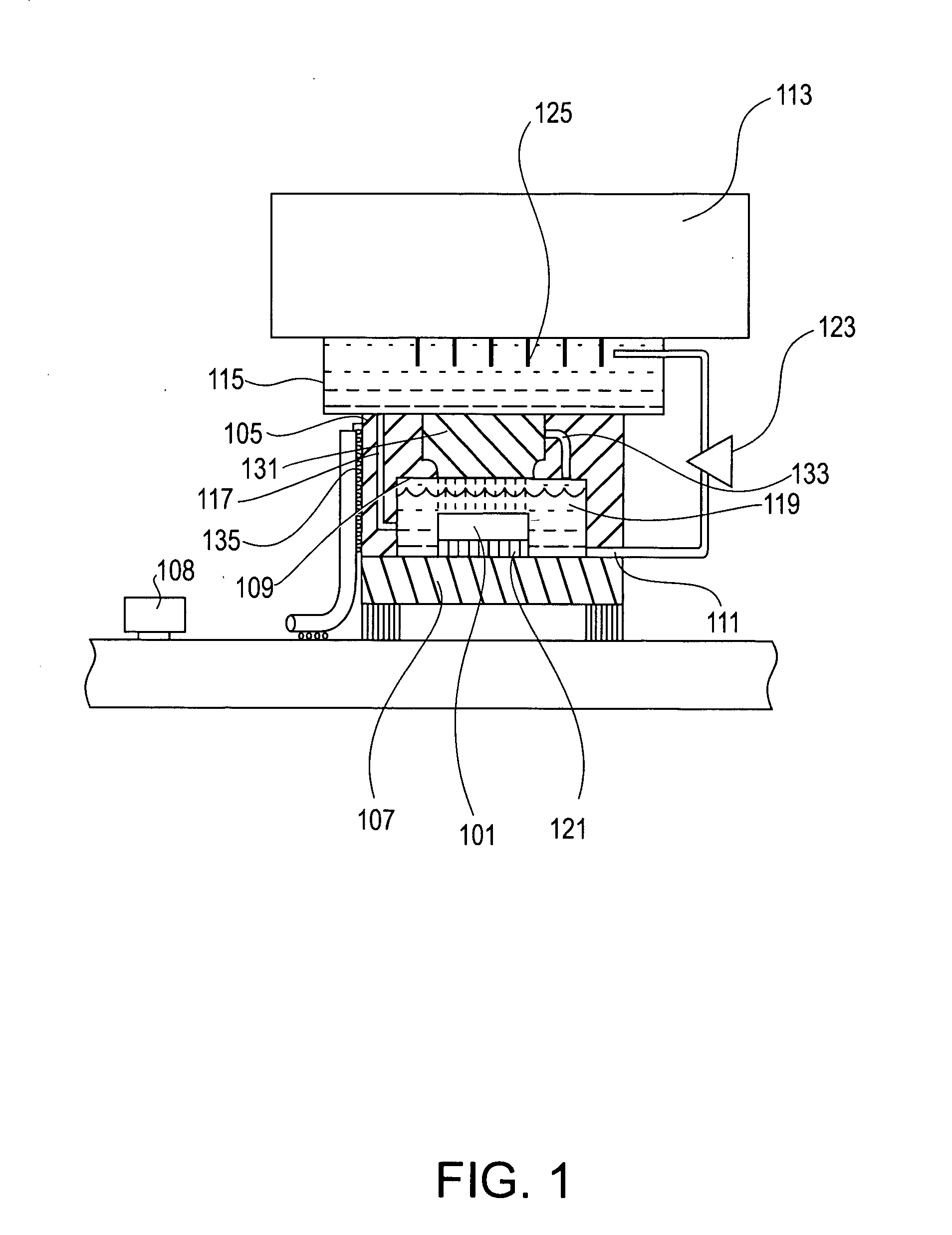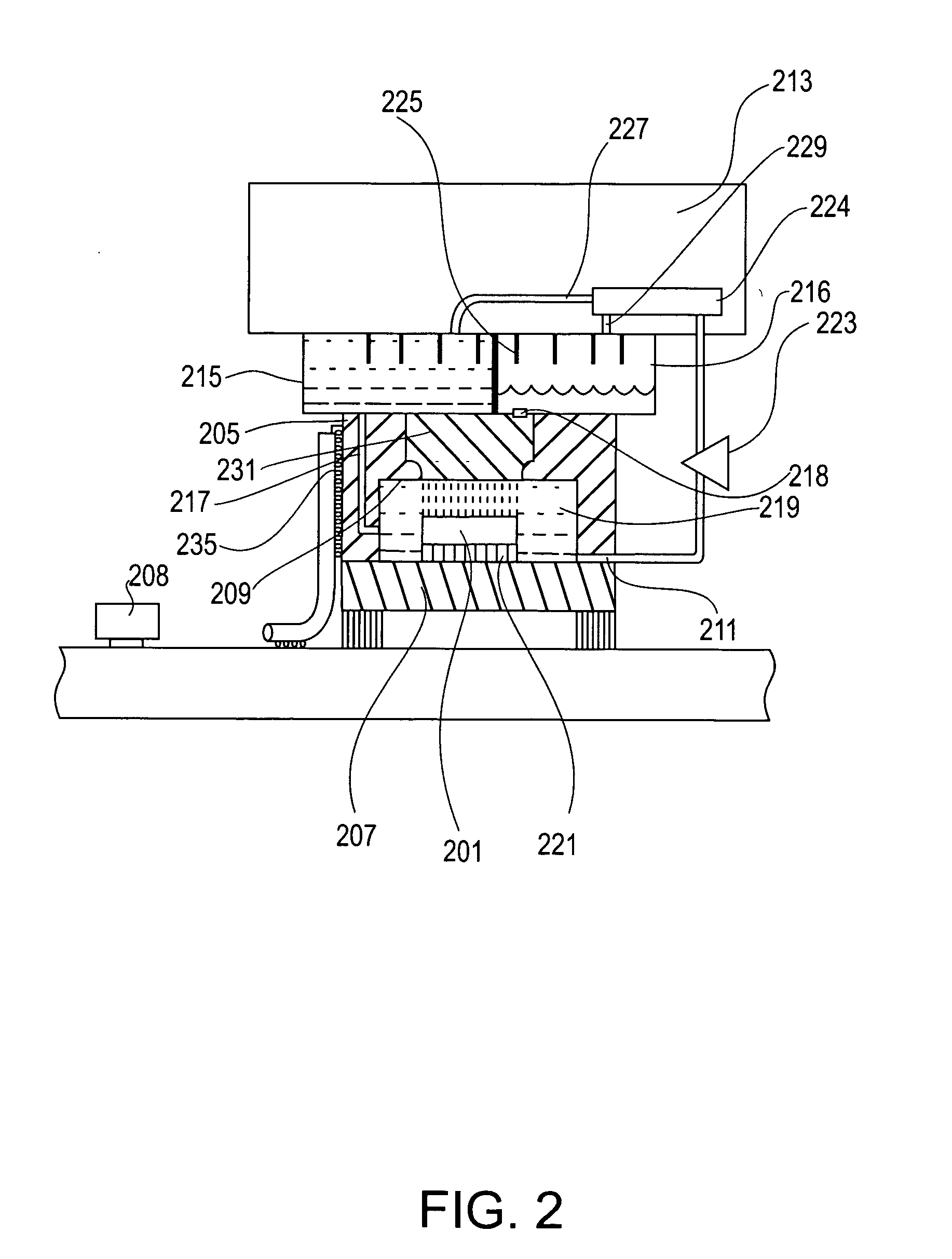Two-fluid spray cooling system
a technology of spray cooling system and spray cooling system, which is applied in the direction of domestic cooling apparatus, semiconductor/solid-state device details, lighting and heating apparatus, etc., can solve the problems of increasing power dissipation requirements, increasing the total power dissipation level needed by computer systems, and increasing the heat generated by devices. achieve the effect of efficient operation
- Summary
- Abstract
- Description
- Claims
- Application Information
AI Technical Summary
Benefits of technology
Problems solved by technology
Method used
Image
Examples
first embodiment
[0024] With reference to FIG. 1, a cooling system is for cooling a component 101, such as a heat-generating semiconductor device, other information processing device, optical component, or the like. The cooling system cools the component with two cooling fluids of different compositions, a first cooling fluid, and a second cooling fluid. The two cooling fluids are immiscible. One of the two cooling fluids has a density greater than the other, and thus when the two are mixed in their liquid state, one of the two cooling fluids floats and the other sinks to a separated state. Exemplary first and second cooling fluids include oil and water, respectively, or alcohol and water, respectively.
[0025] The cooling system is incorporated into a housing forming a cooling cap 105, which is affixed to a substrate 107 mounting the component 101. The cooling cap may be removably affixed to the substrate, providing for both the cooling cap to be a modular part, and the component to be serviceable. T...
fourth embodiment
[0086] With reference to FIG. 4, a cooling system is for cooling a component 401, such as a heat-generating semiconductor device, other information processing device, optical component, or the like. Structurally and operationally, this device is similar to the first three embodiments, except as otherwise indicated below. The cooling system cools the component with a solution comprising two miscible cooling fluids of different compositions, a first cooling fluid, and a second cooling fluid. Exemplary first and second cooling fluids include glycerine and water, respectively.
[0087] The cooling system is incorporated into a housing forming a cooling cap 405, which is affixed to a substrate 407 mounting the component 401. The cooling cap may be removably affixed to the substrate, providing for both the cooling cap to be a modular part, and the component to be serviceable. The cooling system forms a closed loop system in the cooling cap when the cooling cap is affixed to the substrate. Th...
PUM
 Login to View More
Login to View More Abstract
Description
Claims
Application Information
 Login to View More
Login to View More - R&D
- Intellectual Property
- Life Sciences
- Materials
- Tech Scout
- Unparalleled Data Quality
- Higher Quality Content
- 60% Fewer Hallucinations
Browse by: Latest US Patents, China's latest patents, Technical Efficacy Thesaurus, Application Domain, Technology Topic, Popular Technical Reports.
© 2025 PatSnap. All rights reserved.Legal|Privacy policy|Modern Slavery Act Transparency Statement|Sitemap|About US| Contact US: help@patsnap.com



